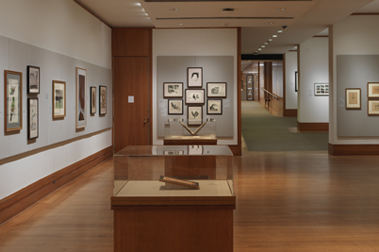Outside the Cork Convent, Cintra
Sir Francis Seymour Haden British
Not on view
Seymour Haden was the unlikely combination of a surgeon and an etcher. Although he pursued a very successful medical career, he is mostly remembered for his etched work as well as for his writings on etching. He was one of a group of artists, including James McNeill Whistler (1834–1903) and Alphonse Legros (1837–1911), whose passionate interest in the medium led to the so-called etching revival, a period that lasted well into the twentieth century. The extolling of etching for its inherent spontaneous qualities reached its pinnacle during this time. While the line of the etching needle, Haden wrote, was "free, expressive, full of vivacity," that of the burin was "cold, constrained, uninteresting," and "without identity."
Nun viewed in profile standing in foreground, at left; buildings of a convent in the middle distance and a landscape beyond."
"Published States: First.-The buildings are shaded on the side towards the right, and the work in the centre and left of the foreground is removed. There is a figure of a nun on the left, and below her, 'Seymour Haden.'
[Source: Harrington, p. 97]
"State II (H1). The buildings throw shadows to the right, covering the detail work on the road, and the work in the center and left foreground removed. A hooded nun added to the left foreground. With the signature 'Seymour Haden (D, l.l.)'.
[Source: Schneiderman, p. 345]
